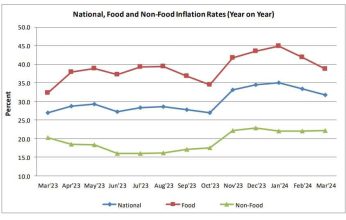Double up legume technology
Malawi’s agricultural production levels and soil fertility continue to plummet due to lack of crop rotation and over use of the same pieces of land.
The economy is agricultural based with soil being the primary and most important basic resource.
As a nation we surely have to devise ways and means of revamping our lost soil fertility so as to feed ourselves and have surplus for income diversification.

As most of the focus in agricultural circles is on the smallholder farmer, so is this article.
Their plight is well documented but their fate not compounded; there are so many ways of helping out this so called “marginalised” group.
But what is really the bone of contention within the smallholder circles? These smallholder farmers often have small land holding sizes, poor production practices leading to low yields and poor decision making on what to grow due to, among other reasons, lack of market information.
Some of these problems can be solved by what the farmers know and are already used to with just a little modification.
Smallholder farmers often intercrop two or more crops in their fields, and usually this involves maize and groundnut or cowpea.
The reasons for intercropping are many, including to get more crops if land is limited, some crops are considered too minor to occupy land on their own and to diversify family diet and income sources.
There is a relatively new phenomenon that involves intercropping two legumes that have different growth habits called the double-up legume technology.
It is an approach that takes advantage of beneficial interactions between the two legume crops.
Successful doubled-up legume intercropping systems mostly involve pigeon pea. It has been established that pigeon pea grows very slowly for the first two months after planting which makes it very suited to intercropping (including with maize).
It follows that pigeon pea can be intercropped with either groundnut or soybean, without too much competition for water, nutrients and sunlight.
Pigeon pea only starts rapid growth when soybean or groundnuts are approaching maturity.
Groundnut or soybean mature first in about four months and are harvested. After this, pigeon pea continues to grow as a sole crop, forms pods, and will be harvested later.
This way we ‘double’ the crops/food and ‘double’ the soil fertility benefits since both legume crops add fertility to the soil.
This way, if maize is grown a year following this double up technology, yields are way better than the conventional way.
This is as a result of the large amount of organic mulch through pigeon pea leaves that fall to the ground as the crop matures. Pigeon peas also have roots than run deep; hence, improving the soil’s structure.
The other legume (soya bean or groundnuts) intercropped with pigeon peas also adds other nutrients to the soil; notably nitrogen fixed through nodules. n
*Gerald Siwombo is an agribusiness expert and consultant based in Lilongwe. His work is mainly based on agricultural value chains of almost all crops.





